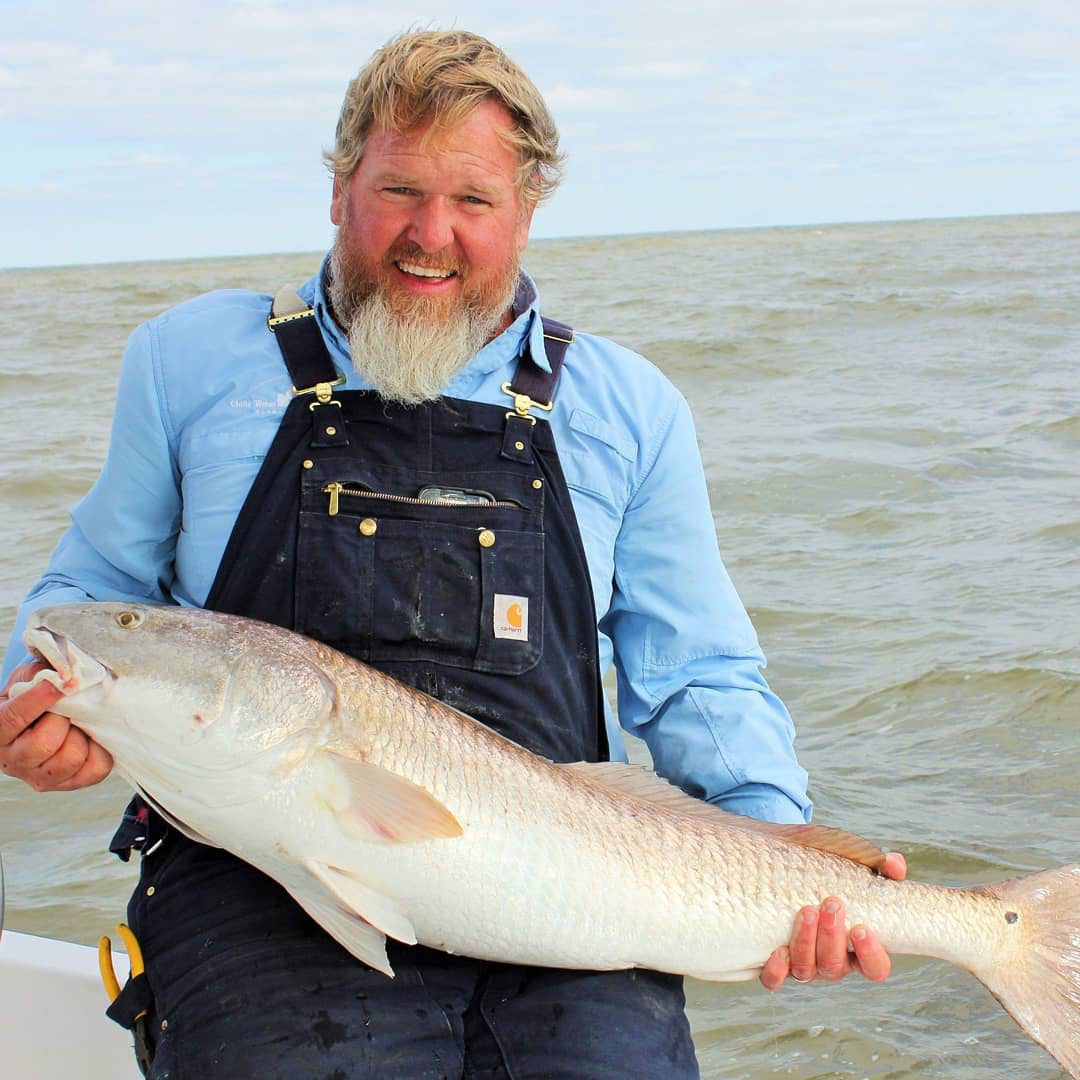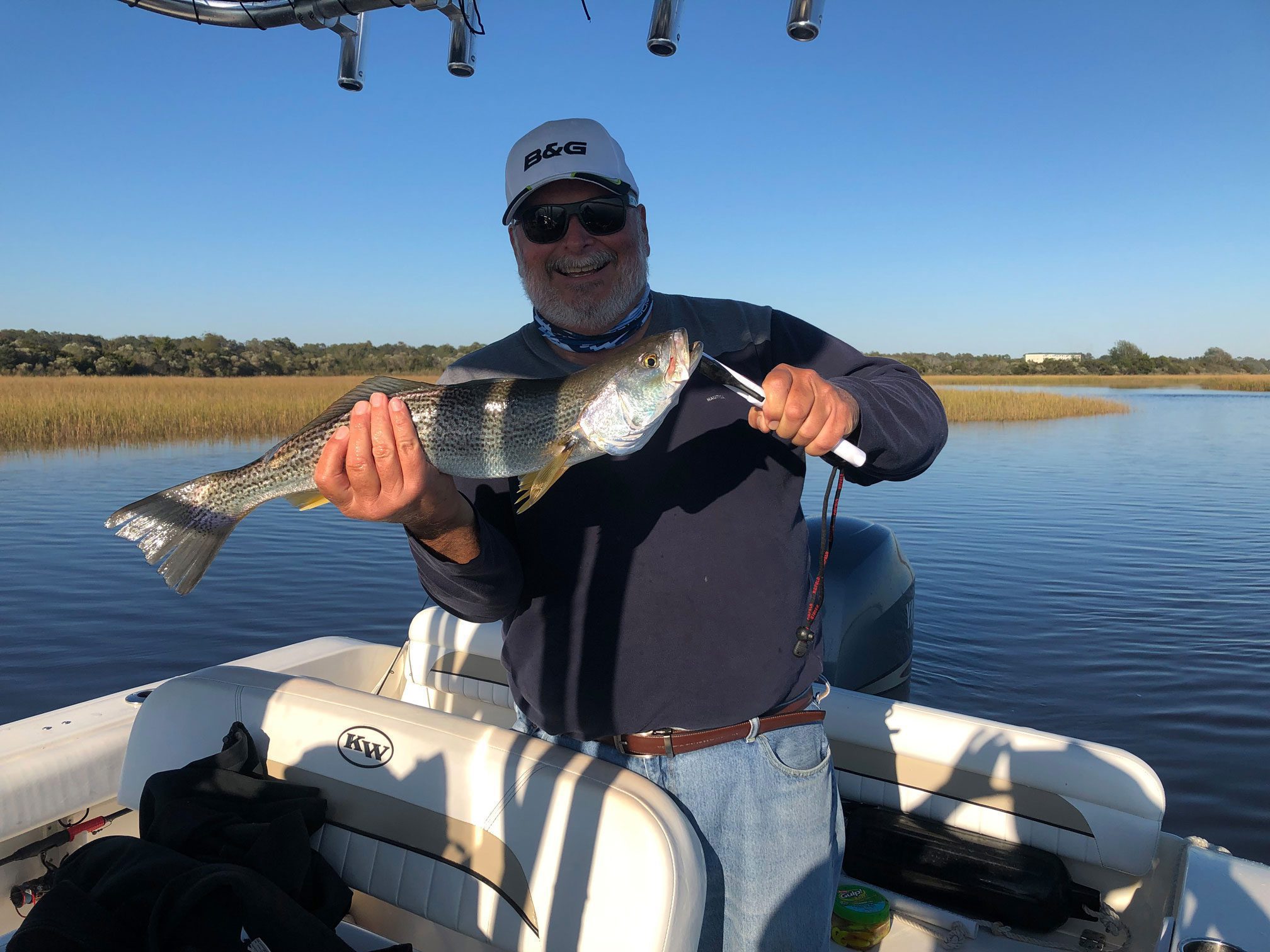North Myrtle Beach/Little River – April 25, 2019
Patrick, of Captain Smiley Fishing Charters, reports that fishing has remained largely the same throughout the month of April as it was during the last few weeks of March.
Speckled trout are still inshore on shelly or sandy bottoms on the low to rising tide. Soft plastics, especially shrimp from Gulp and Vudu, continue to produce.
Bigger trout (25-30”) are at the jetties, where drifting shrimp in the current on a changing tide is the key to success. Big slot reds are falling for shrimp in the same area.
Red and black drum are also chewing near ICW docks and drop-offs in depths no more than 5’.
One big change over the last few weeks has been the presence of keeper flounder, which are becoming much more abundant.
On the nearshore reefs, plenty of weakfish have been available, alongside some big black sea bass.
Spanish mackerel and bluefish are still biting as well.

Capt. Bevan Hunter, of Chilly Water Fishing Charters out of Myrtle Beach, SC, with a bull red that fell for a live bait on the bottom while he was fishing off of Myrtle Beach.
Bob, of Strange Magic Fishing Charters, reports that the last few weeks have made for an interesting time to fish, as the bite all around shifts from winter to spring patterns. Bluefish, croakers, and pinfish have been readily stealing bait, but a large variety of minnows have moved in with them. Bait has been thick, with crabs and small shrimp in the mix, and the bigger fish have noticed.
Reds have broken out of their backwater winter schools and are being caught much more consistently. They’re hitting everything from artificials on jig heads to mud minnows and shrimp. Back in the creeks, look for areas off the beaten path, especially when there’s a lot of boat traffic. Popping corks work well in shallow water just off grass banks, and the best scenario is if the grass banks transition to shell banks or are near feeder creeks or marsh drains.
Trout are in the same areas. The specks are definitely changing their feeding patterns, with mud minnows on corks or jig heads working almost as well as Gulp baits. The trout are competing with bluefish in these areas, so if you don’t get a bite in the first few minutes, change your location, as the trout are much more mobile than they were in the winter months.
Black drum are still a little scarce, but docks and deep creek holes are still the go-to places. Fresh shrimp on a Carolina rig or jig head works the best. The drum are also being caught out at the inlet rocks, with crab chunks and fresh shrimp on the bottom working the best. Try a place for a few minutes, and if it’s unsuccessful, slide down the jetty line.
Larger trout are also out at the rocks, with live shrimp off a popping cork working very well.
Flounder are showing up, but in small numbers and sizes at this point. With the water temperatures continuing on their current pattern, though, it won’t be long before the flatfish appear in earnest. Flounder like to lay in sand or mud, particularly in bait highways such as creek mouths, any kind of structure, and docks. Gulp baits on jig heads or mud minnows will be the go-to baits.

Ron Maness, of North Myrtle Beach, with a 24″ trout he landed while fishing a mud minnow under a popping cork in Tubbs Inlet.
Cameron, of Little River Fishing Fleet, reports that trolling for spanish, bluefish, and schoolie kings has been productive in the 5-10 mile range.
Bottom fishing in the same area has produced a couple of flounder and porgies, and some nice black sea bass are still coming in.
King fishing has been especially hot in the 20-35 mile range, with 15-30 fish consistently being caught in a matter of hours. Most of them have been anywhere between 5-18 lbs.
On the bottom, turbo grunts are moving in. Most of the turbo grunts are chewing on the offshore bottom toward the Gulf Stream, though, along with vermilion snapper, jumbo sea bass, and some nice triggerfish. Big grouper (up to 25 lbs.) are being caught, vented, and released, so conditions are looking very good for the opening of grouper season.
Kings between 25-30 lbs. and small mahi are coming in off cigar minnows on the drift lines.
Michael, of Cherry Grove Pier, reports that fishing has picked up considerably. Bluefish and spanish are starting to come in, along with the first black drum of the year. A few nice pompano and a handful of silver perch are biting as well, and the whiting are getting a little bigger.
Shrimp has been working for the bottom fish, though plugs and jigs are producing as well.
